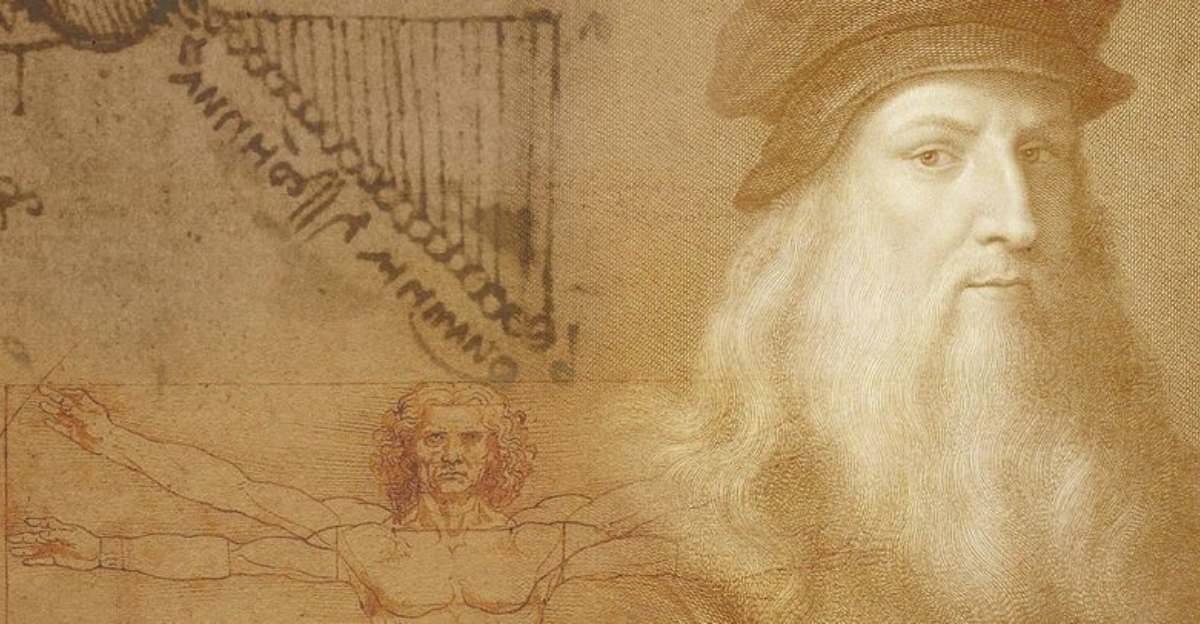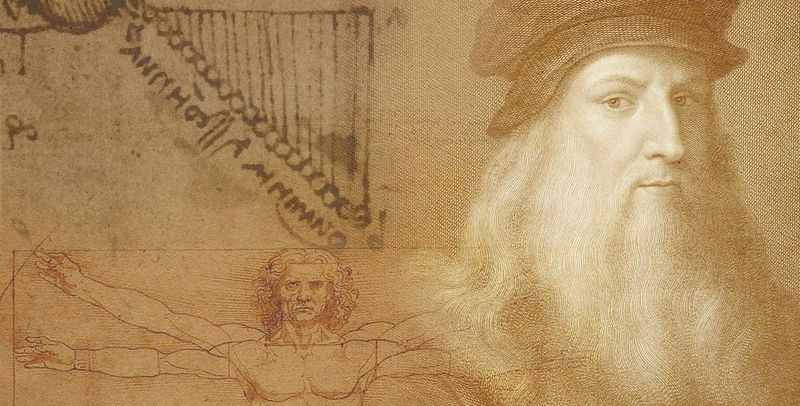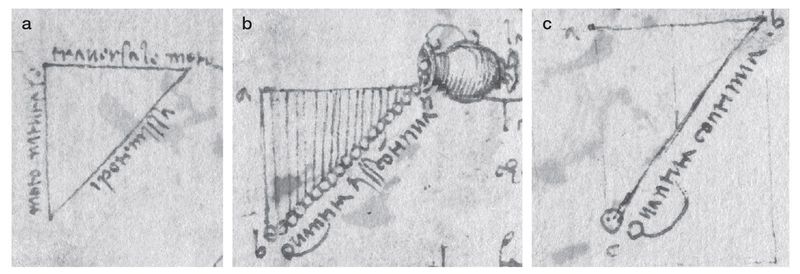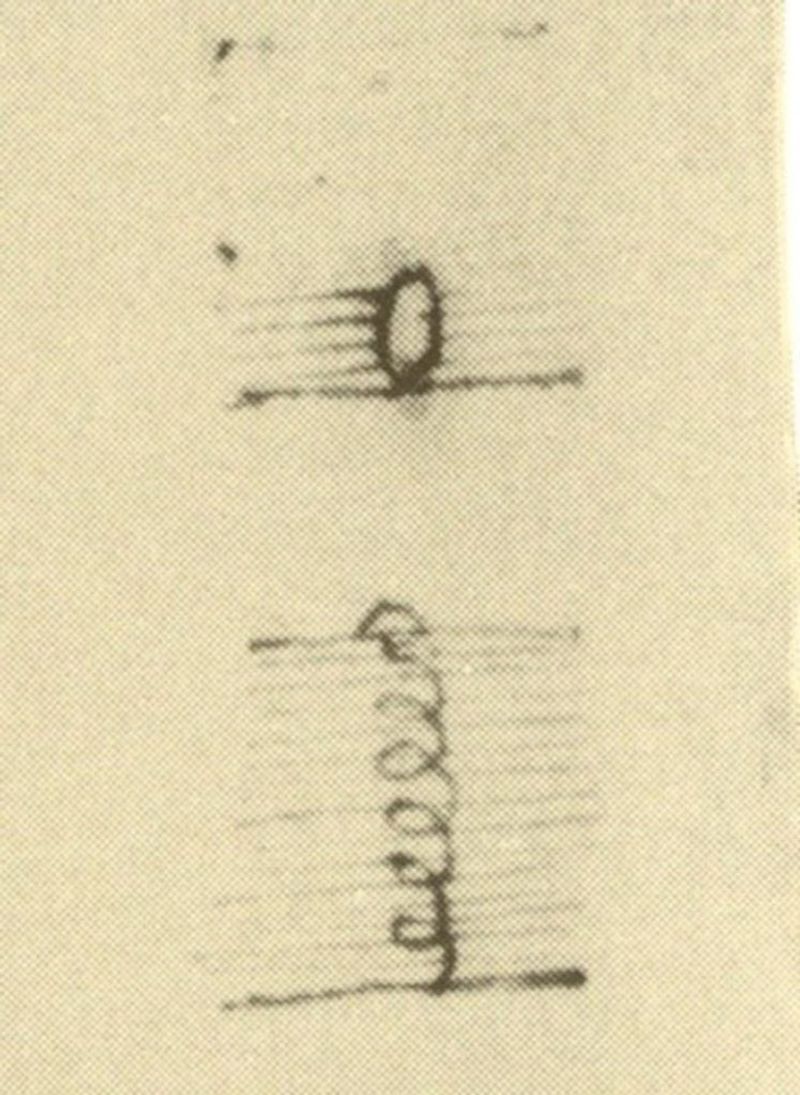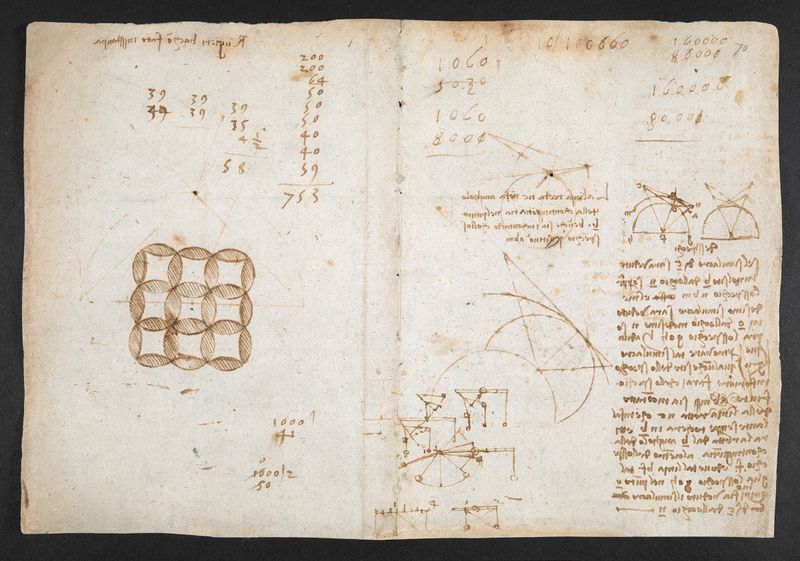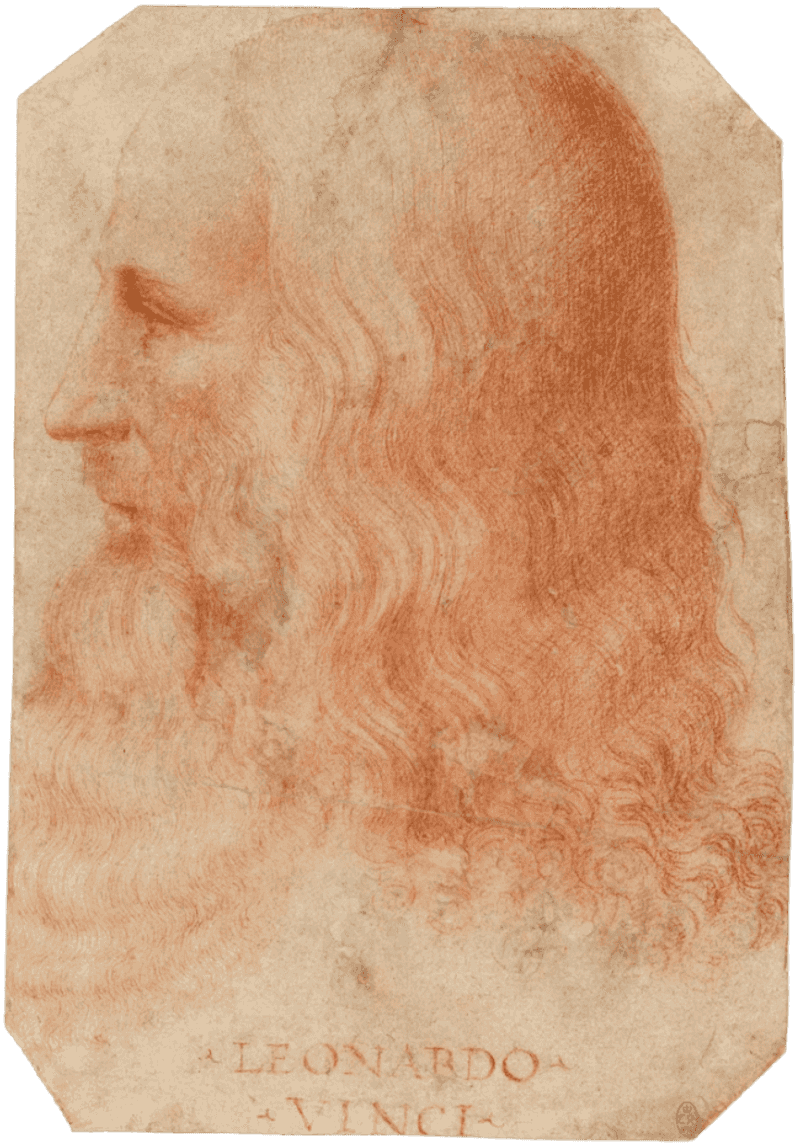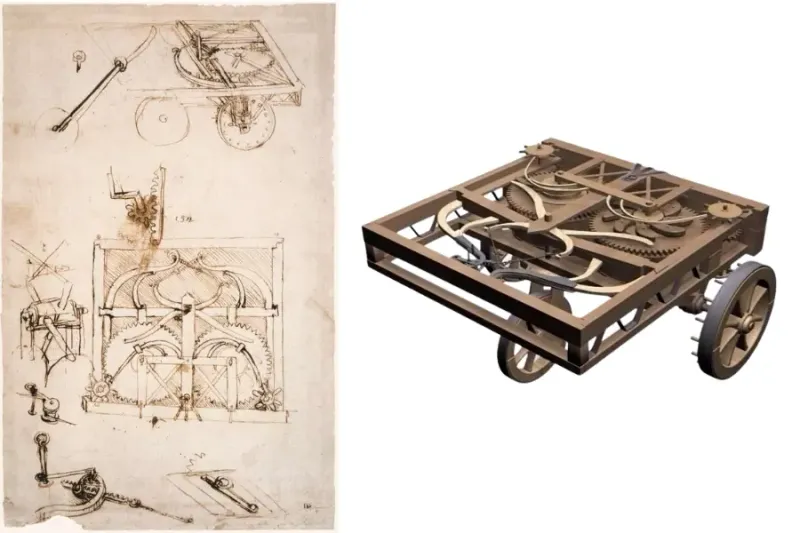Long before Isaac Newton’s apple supposedly fell, Leonardo da Vinci was quietly unraveling gravity’s secrets through his remarkable sketches.
While celebrated for the Mona Lisa and flying machines, Leonardo’s understanding of how objects fall, balance, and move reveals a mind centuries ahead of its time.
These forgotten drawings, hidden in his notebooks, show that this Renaissance genius intuited gravitational principles nearly 200 years before Newton formalized them.
1. The Sand-Fall Experiment
Hidden among Leonardo’s thousands of pages lies a simple yet revolutionary sketch: a suspended jug with sand trickling onto a moving platform below. The genius observed something remarkable – the falling sand formed a perfect parabolic curve.
This observation predated Galileo’s formal studies of projectile motion by nearly a century. Leonardo noted how the horizontal movement combined with vertical falling created predictable patterns.
Without modern mathematics or equipment, he visually captured what would later become fundamental physics. The sketch reveals Leonardo wasn’t just an artist who understood perspective, but a scientist who recognized gravity’s consistent influence on moving objects.
2. Pendulum Motion
Swinging weights fascinated Leonardo decades before Galileo’s famous pendulum studies. His notebooks contain delicate sketches of pendulums in various stages of swing, revealing his fascination with their hypnotic rhythm.
Leonardo noticed something profound – pendulums maintain consistent timing regardless of swing amplitude. This insight led him to design primitive timing devices for his other experiments.
The sketches show pendulums of different lengths, with notes suggesting he understood the relationship between a pendulum’s length and its swing period. This fundamental principle would later become crucial to clockmaking, yet Leonardo recognized it through pure observation nearly a century before it was formally documented.
3. Inclined Plane Studies
Spheres rolling down slanted surfaces captivated Leonardo’s analytical mind. His meticulous sketches show objects gaining speed as they descend various inclines, accompanied by notes observing that velocity increases “as distance was gained.”
While lacking formal mathematical language, Leonardo’s visual documentation proved he understood acceleration intuitively. He drew different angles and surfaces, testing how objects behaved under gravity’s influence.
These studies predated Galileo’s famous inclined plane experiments by nearly a century. Leonardo’s sketches reveal he recognized the relationship between slope, distance, and speed – fundamental concepts in physics that wouldn’t be formally quantified until long after his death.
4. Gravity vs. Weight Distinction
Among Leonardo’s most forward-thinking observations are his notes distinguishing between weight and gravity. Scribbled in his characteristic mirror-writing are profound insights about how objects’ weight changes with orientation and location.
One particularly striking sketch shows balanced scales with annotations suggesting Leonardo understood that weight varies depending on distance from Earth. This concept wouldn’t be formally articulated until Newton’s law of universal gravitation.
Leonardo even hinted at understanding that objects in different locations might weigh differently – a rudimentary grasp of gravitational variance. His notes reveal a mind grappling with concepts that would remain undefined for centuries, armed only with observation and intuition.
5. Falling Water Observations
Water cascading from fountains became Leonardo’s natural laboratory. His notebooks overflow with detailed studies of water droplets in free fall, capturing their acceleration patterns with remarkable accuracy.
Leonardo’s sketches reveal water breaking into droplets, forming patterns that demonstrated uniform acceleration. Without modern cameras or timing devices, he somehow captured the essence of falling objects through pure observation.
Most remarkably, he noted how water droplets of different sizes fell at the same rate when air resistance was minimal. This fundamental principle of gravity wouldn’t be formally demonstrated until Galileo’s legendary (though possibly apocryphal) Leaning Tower of Pisa experiment nearly a century later.
6. Center of Gravity Diagrams
Leonardo’s fascination with balance produced remarkably accurate center of gravity diagrams. Cones, spheres, and irregular shapes appear throughout his notebooks, each marked with precise points showing where they balanced perfectly.
One particularly insightful page shows a series of geometric forms with lines indicating their axes of symmetry and balance points. Leonardo understood intuitively that an object’s stability depended on its center of gravity’s position relative to its base.
These sketches went beyond mere observation – they demonstrated Leonardo’s understanding of mass distribution and equilibrium. He applied these principles to architecture, machinery, and even his studies of human movement, revealing gravity’s influence across disciplines centuries before formal physics would explain these relationships.
7. Human Anatomy and Balance
Leonardo’s famous Vitruvian Man isn’t just about proportions – it’s a gravity study disguised as art. Throughout his anatomical sketches, Leonardo obsessively documented how humans maintain balance against gravity’s constant pull.
His drawings show people in various poses with lines indicating their centers of gravity. Leonardo observed how the human body instinctively adjusts to keep this center over the feet, preventing falls.
One remarkable sketch shows a man carrying a weight, with notes describing how the body naturally counterbalances by leaning away from the load. This biomechanical understanding revealed Leonardo’s grasp of gravity’s effects on living systems, merging art, anatomy, and physics centuries before these would become distinct disciplines.
8. Arched Motion in Projectiles
Leonardo’s military engineering sketches reveal his understanding of projectile motion. Scattered throughout his notebooks are drawings of catapults, trebuchets, and flying objects with carefully traced arcs showing their paths through air.
Most tellingly, he described “the curve of a thrown stone” – recognizing that horizontal motion combined with gravity’s downward pull creates parabolic trajectories. Without calculus or physics equations, Leonardo visually captured what would later become fundamental ballistics principles.
His sketches include attempts to predict where projectiles would land based on launch angle and force. Though lacking mathematical precision, these drawings demonstrate Leonardo intuitively grasped gravitational acceleration’s effect on moving objects, centuries before Newton would formalize these relationships.
9. Use of Water Clocks to Time Motion
Measuring time precisely was essential for understanding motion, and Leonardo ingeniously adapted ancient technology to this purpose. His notebooks show designs for clepsydras – water clocks that dripped at consistent rates – specifically modified to time falling objects.
Leonardo’s sketches reveal experimental setups where objects fell while water flowed from calibrated vessels. By measuring the water volume collected during an object’s descent, he could compare falling times with remarkable precision.
This makeshift chronometry predated mechanical stopwatches by centuries. Leonardo’s improvised measurement system demonstrates his scientific methodology – he wasn’t content merely observing gravity but sought to quantify its effects, laying groundwork for the experimental approach that would later revolutionize physics.
10. Mirror-Written Notes on Acceleration
Among Leonardo’s backwards-written texts lie astonishing insights about acceleration. Simple phrases like “motion increases with time” appear alongside sketches of falling objects, revealing his grasp of gravity’s consistent influence.
One page shows a sequence of falling spheres with spacing that widens progressively – visually representing increasing velocity. Without calculus or equations, Leonardo captured acceleration through pure observation and artistic representation.
His notes suggest he recognized that falling objects don’t move at constant speeds but continuously accelerate. This fundamental principle wouldn’t be mathematically formalized until Galileo and Newton, yet Leonardo’s mirror-writing already contained the conceptual seeds of what would become cornerstone physics principles.
11. Drafts of Rolling Weights
Momentum fascinated Leonardo long before the concept had a name. His notebooks contain numerous studies of weighted wheels and carts, showing how objects in motion tend to stay in motion.
One particularly insightful sketch shows a cart rolling down a slight incline, with notes suggesting Leonardo understood how the weight’s movement continued even on flat ground. He observed how heavier objects required more force to start moving but then maintained their motion longer.
Leonardo’s drawings reveal his intuitive grasp of inertia’s relationship with gravity and friction. His observations about how objects behave when rolling anticipated Newton’s first law of motion by nearly two centuries, demonstrating how careful observation could reveal fundamental physical principles.
12. Abandoned Gravitational Notation
Perhaps most tantalizing are Leonardo’s attempts to quantify gravity mathematically. Several notebook pages show mysterious symbols alongside falling objects – possibly his personal notation system for recording gravitational effects.
These symbols appear consistently in his gravity-related sketches but have never been fully decoded. Some historians believe they represent Leonardo’s attempt to create a mathematical language for describing motion before such notation existed.
The abandoned notation system suggests Leonardo was pushing against the limits of 15th-century mathematics. Without calculus or algebraic tools to express his observations precisely, he invented his own symbolic language – a testament to his frustration with existing methods and his determination to capture the patterns he observed in nature.
